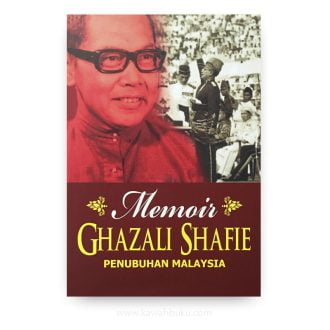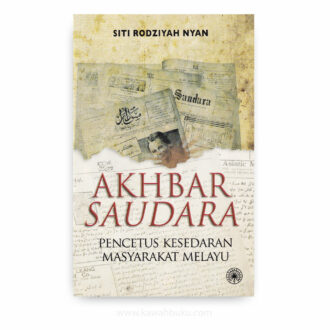In Class, Race and Colonialism in Peninsular Malaysia: A Political History of Malaysian Indians, Michael Stenson offers the authoritative political history of ethnic Indians in colonial and early post-colonial Malaya. Rejecting the plural society approach, he discusses relevant aspects of the political economy of colonial Malaya, including its class structure, the organisation of labour, its place in the world economy and importance to the British empire.
Stenson links British policies to the exploitation and impoverishment of mainly Indian workers. The cultural, linguistic and other differences of the working masses in colonial Malaya lent themselves to ethnic mobilisation. Some from the Indian petty bourgeoisie or middle class mobilised along mainly ethnic lines, often with reference to the growing anti-British nationalist movement in India.
Meanwhile, the increasingly militant labour movement also mobilised along familiar communal, but essentially class lines. After the trauma of the Japanese Occupation, when many Indians were initially mobilised against British colonialism in India, the radical labour movement worked with others in progressive anti-colonial coalitions, such as Putera-AMCJA, to demand independence.
Later, after Independence, many joined the Labour Party in the Socialist Front. Both the colonial and post-colonial state harshly repressed radical, class-based, anti-imperialist politics. Stenson outlines how Malaysia’s post-colonial ruling elite perpetuated communal divisions in furthering ethno-populisms in defence of their own interests.
Now republished with an Afterword by V. Selvaratnam, Stenson’s historical insights remain relevant in the face of the continuing but nonetheless changing the plight of the vast working-class majority of Malaysian Indians.
The conventional history of Malaya (now peninsular Malaysia) has been told countless times. It begins with European, particularly British, conquest and expansion-not much of importance is assumed to have occurred in the preceding centuries except for the arrival of Islam. The economic development of Malaya is thought to be a product of British enterprise and administration combined with immigrant labour from China and India. The Malay community, it is suggested, preferred to remain in the rural sidelines, protected by colonial benevolence. After the brief interruption by the Japanese occupation (again, not much of interest happened), there was steady progress toward Merdeka (independence) in 1957. The only problems encountered have been Communist terrorism mounted from the jungle during the Emergency (1948-1960) and the “race issue.”
These antagonisms among Malays, Chinese, and Indians are said to be held in check by a consensus-minded government grounded in the country’s Western-educated elites. This thumbnail sketch, however simplistic, contains the essentials of most popular thinking about Malaysia and is often found in academic works as well.
These views of Malaysian history (and of the present) are in the process of being undermined, if not discarded. Among the scholars who have contributed to a more accurate and insightful understanding of Malaysian history are Wong Lin-Ken, Syed Husin Ali, William R. Roff, Khoo Kay Kirn, Clive S. Kessler, Lim Teck-Ghee, and Martin Rudner.
Michael Stenson’s Class, Race and Colonialism in Peninsular Malaysia: A Political History of Malaysian Indians, is a major work that continues in these new directions. Although incomplete and uneven in many respects, it is a serious work that demands the attention of all Malaysia scholars. Michael Stenson, the author of an earlier book—Industrial Conflict in Malaya: Prelude to the Communist Revolt of 1948 (1970)—and several articles on Malaysia, began this book as a study of the Indian community in Malaysian history. As he explains in the preface, he was unable to examine one community in the plural society of Malaysia without a parallel analysis of the evolution of Malaysian society and its position in the global political economy. The net result is an unusual mixture of revisionist history (primarily of the colonial era) and an analysis of socioeconomic differentiation and political movements within the Indian community.
The uneven construction of Class, Race and Colonialism in Peninsular Malaysia: A Political History of Malaysian Indians is most certainly due to the tragic death of the author in 1977 before he finished the book. Even readers who do not share Stenson’s political perspective will find much that is new and insightful in this book. He synthesizes facts and interpretations from secondary literature with his detailed reading of official colonial records, newspaper accounts, and other primary materials. Although some of his sweeping generalizations are not completely supported by the available evidence, his interpretations and conclusions cannot be easily dismissed.
Indian labour was brought to the emerging plantation economy of colonial Malaya, not because of an absolute shortage of labour, but because of a shortage of cheap labour chat would work on the terms offered by the colonial masters. Wages and working conditions on plantations only slowly improved as a result of external political pressures, not because of rising profits. Declines in rubber revenues did, however, result in the lowering of wages and periodic repatriation of labour to India. The conditions of labour on estates prior to World War II thus resembled feudal serfdom more than capitalist wage labour. These conclusions are documented and discussed in the early chapters of the book. Its most valuable contribution, however, is Stenson’s analysis of the political dynamics of labour, capital, and ethnic relations during the Japanese occupation and in the postwar years prior to independence.
Here he challenges the conventional understanding of these years with a persistent focus on the class relations among and within ethnic communities. Yet he does not hesitate to document the excesses of racism and nationalism among progressive political groups on the left. Despite what his own political views might seem to suggest, Stenson sees history as a complex clash of forces, which do not always lead in one direction. All scholars of Malaysian history are poorer for the loss of Michael Stenson in the midst of his promising and productive academic career. It remains our obligation to investigate further the many questions and issues raised in this valuable and provocative book.











Reviews
There are no reviews yet